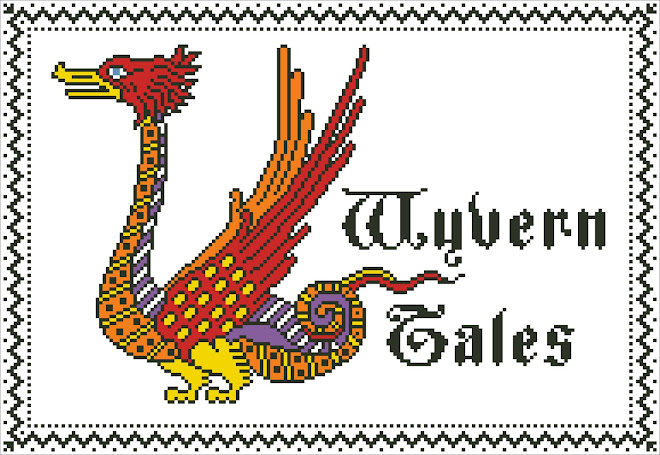Mary, Queen of Scots, was held captive by her cousin, Queen Elizabeth I, for almost twenty years before she was beheaded in 1587. The last fifteen years of her imprisonment were spent in the company of Bess of Hardwick who, together with Mary, completed the now-famous embroideries found at Oxburgh Hall and Hardwick Castle. (To see 17 of Mary's embroideries, go to www.vandaimages.com/ and search for Oxburgh Hangings.) It is amazing to think that Mary did such detailed work -- her cruciform panels were worked on evenweave linen at 13 stitches to the inch -- despite the fact that "she is very shortsighted, being unable to read or do anything else unless she has her sight quite close to what she wishes to peruse or to see distinctly" (from a 1557 description given by Giovanni Michieli, the Venetian ambassador to her court).
I was fascinated to discover that Baltimore's Johns Hopkins University owns original copies of the natural history books of Ulisse Aldrovandi (1522-1605) that contain many of the motifs which Mary used. Lea Sears and I decided that we had to design new, tweaked versions of Mary's embroideries but utilizing all the basic elements of her originals.
This is the elephant panel (Victoria and Albert Museum, London). It is an example of what all the panels looked like before they were cut down and appliqued onto large hangings. These are the main elements of each panel.
1. The cruciform outline, a modified Alisee Pattee cross, around the center motif
2. The central motif of one animal, often with smaller motifs around it
3. A banner with the animal's name
4. Small motifs, sometimes different and sometimes all the same, in each outside corner
5. Often the cypher or monogram of Mary
This drake is the first of our next set of "Inspired by Mary" designs. In addition to using all the main elements of Mary's original designs, we continue to use colors that are appropriate for Renaissance embroidery. We have, however, allowed ourselves the freedom to use the entire range of each color's shades in DMC floss. This has given us a wider range of color options as well as "allowing" us to brighten up the designs. The plain cruciform outline has been tweaked for greater emphasis, and the black-and-white border seems to make the whole design pop..
For a wonderful web site about Mary, go to Mary, Queen of Scots: Biography, Portraits, Primary Sources. Of particular interest, under Primary Sources, is a contemporary description by Giovanni Michieli.
The following books are recommended for further reading.
Bath, Michael. Emblems for a Queen: The Needlework of Mary Queen of Scots. London: Archetype Publications, 2008.
Levey, Santina. The Embroideries at Hardwick Hall: A Catalogue. London: National Trust, 2007.
Swain, Margaret. The Needlework of Mary Queen of Scots. Carlton: Ruth Bean, 1986.
To see some of the original animals that Mary used in her embroideries, view Dover Publications' book and CD-Rom titled Gerner's Curious and Fantastic Beasts.
Saturday, June 26, 2010
Subscribe to:
Posts (Atom)



